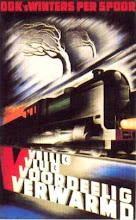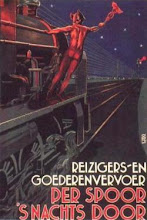
This weekend was great for playing with the pre-war Lionel trains and running them on the layout. I like the sound of the wheels on the tubular tracks and the sweet smell of ozone.
Anyway, it was also the first round for the restored 259E. The pilot wheel does not negotiate all switches good, when a switch is directly after a curve the pilot wheel still point inside the curve and derails on the switch. Hmmm, lets try to readjust the spring and lubricate the suspension point a bit better.
Furthermore, the E-unit buzzes enormously and when it is switched off, the engine runs much better. Perhaps, I need to change there also something.
For the rest it run smoothly.
A few pictures were made to s
 how the fun.
how the fun.













